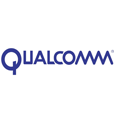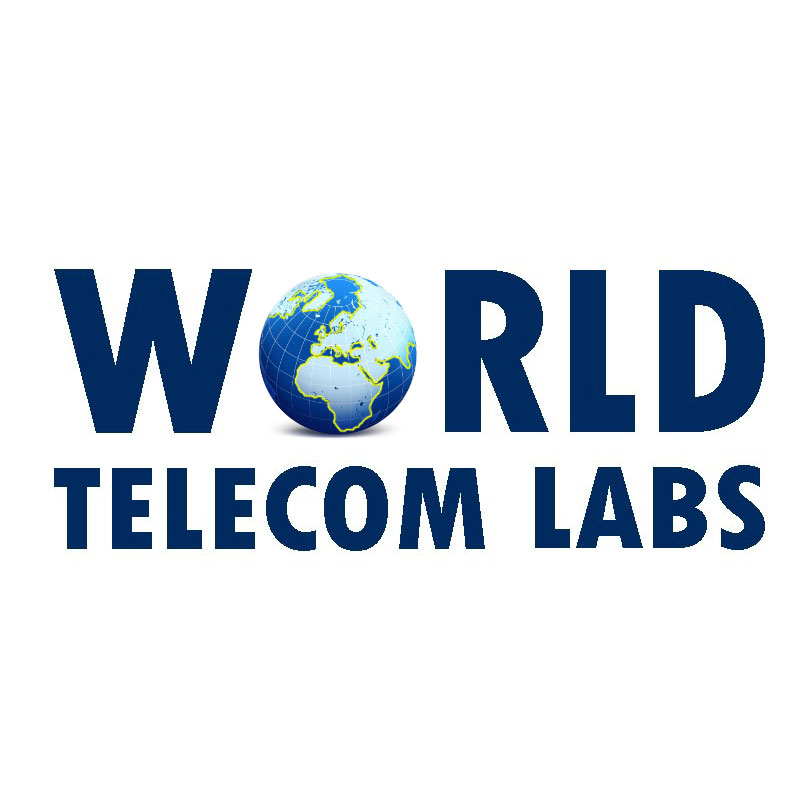 Nigeria-based infrastructure firm MainOne Cable Company has announced that the submarine branch linking Cote d’Ivoire to its MainOne cable system is now ready for service (RFS). In addition, MainOne is also announcing the availability of its newly constructed Tier III data centre in Abidjan (Cote d’Ivoire), offering rack spaces for customers to collocate their IT infrastructure. Kazeem Oladepo, Regional Executive at MainOne, stated: ‘We remain committed to providing infrastructure and connectivity services that support the digitisation journey and economic development of the region. Our investment into Cote d’Ivoire will see MainOne contributing to the growth of the local economy, by serving enterprises and telecommunication providers with world-class connectivity solutions and data centre expertise.’ The 7,000km MainOne cable system was launched in 2010 and has landing stations in Lagos (Nigeria), Accra (Ghana) and Seixal (Portugal). In September 2018 MainOne Cable Company inked an agreement with Orange Group, under which Orange will acquire additional capacity on the MainOne submarine cable system, while Orange Marine was chosen to manage the installation of two new branches – to Dakar in Senegal and Abidjan (Cote d’Ivoire).
Nigeria-based infrastructure firm MainOne Cable Company has announced that the submarine branch linking Cote d’Ivoire to its MainOne cable system is now ready for service (RFS). In addition, MainOne is also announcing the availability of its newly constructed Tier III data centre in Abidjan (Cote d’Ivoire), offering rack spaces for customers to collocate their IT infrastructure. Kazeem Oladepo, Regional Executive at MainOne, stated: ‘We remain committed to providing infrastructure and connectivity services that support the digitisation journey and economic development of the region. Our investment into Cote d’Ivoire will see MainOne contributing to the growth of the local economy, by serving enterprises and telecommunication providers with world-class connectivity solutions and data centre expertise.’ The 7,000km MainOne cable system was launched in 2010 and has landing stations in Lagos (Nigeria), Accra (Ghana) and Seixal (Portugal). In September 2018 MainOne Cable Company inked an agreement with Orange Group, under which Orange will acquire additional capacity on the MainOne submarine cable system, while Orange Marine was chosen to manage the installation of two new branches – to Dakar in Senegal and Abidjan (Cote d’Ivoire).
Djibouti Telecom, Somtel, Telkom Kenya and SubCom have revealed that all manufacturing aspects of the Djibouti Africa Regional Express 1 (DARE1) submarine cable system are now complete, with the system on track for commercial launch in June 2020. The 4,854km cable – which will include 41 dual-stage repeaters to maximise its capacity – will have four landing stations in Eastern Africa: Djibouti (Djibouti), Bosaso (Somalia), Mogadishu (Somalia) and Mombasa (Kenya). DARE1 is configured as a three-fibre pair trunk and each trunk fibre pair has cross sectional capacity of 40 channels at 300Gbps; in addition to the dual-stage repeaters included on all branches of the system, the Bosaso and Mogadishu segments will be equipped with a switched ROADM, to provide flexible capacity routing and a robust fault protection scheme for the system. The marine survey for the system was completed in March 2019.
New Caledonian carrier the Societe Caledonienne de Connectivite Internationale (SCCI) and Hawaiki Cable Company have signed a ‘multi-million dollar’ deal to connect New Caledonia to the Hawaiki Cable. The deal will provide SCCI with a turnkey solution to connect to Hawaiki, including a subsea branch to Noumea and the Isles of Pines, and ‘significant capacity’ on the transpacific cable. The new branch, dubbed Tomoo, is scheduled for completion in 2021. The 14,000km Hawaiki system – which entered into service in July 2018 – has five segments and currently lands in five locations: Sydney, Australia; Mangawhai Heads, New Zealand; Tafuna, American Samoa; Kapolei, Oahu, Hawaii; and Pacific City, Oregon (US). The Hawaiki system’s capacity and facilities of the main trunk are 100%-owned by the HCL Limited Partnership (excluding the spur to American Samoa, which is owned by the American Samoa Telecommunications Authority [ASTCA]). In addition, Hawaiki Submarine Cable USA owns and operates the Hawaiki System’s cable landing station in Oahu (Hawaii). The cable has a design capacity of 67Tbps.
Vocus is planning to build a 500km cable loop, dubbed the Bonaparte Basin Cable Loop (BBCL), to service the forthcoming multi-billion dollar Barossa gas project. The new cable loop will be integrated into the 2,100km North West Cable System. The cable system, which was certified RFS in September 2016, is a subsea route connecting Port Hedland and Darwin (Australia). It traverses a route near a number of gas fields and offshore projects. Vocus has contracted Alcatel Submarine Networks (ASN) for the cable loop deployment.
Liquid Telecom South Africa, part of pan-African telecoms group Liquid Telecom, has officially inaugurated the landing station of the Melting Pot Indianoceanic Submarine System (METISS) at Umbogotwini in KwaZulu-Natal (KZN, South Africa). The project is expected to be completed and operational by July 2020. Via the new infrastructure, Liquid Telecom SA will host and manage the METISS submarine cable, whilst also providing fibre backhaul to Teraco. METISS Chairman Xavier Hemesse commented: ‘This partnership with Liquid Telecom is an important step for connecting people and economies of the Indian Ocean islands to South Africa which is among the major internet hubs in Africa.’ The 3,200km fibre-optic cable will connect South Africa, Madagascar, Reunion and Mauritius, delivering 24Tbps of design capacity. The project, which was initiated by the Indian Ocean Commission (IOC), will benefit from the financial backing of the EU and the French Development Agency (Afd). The project is being developed by a number of telecoms operators – Telma and Blueline of Madagascar, Emtel and CEB FiberNET of Mauritius, Zeop and SFR of Reunion, and Canal+ Telecom of France.
Elsewhere in Africa, the telecoms ministries of Cameroon and Gabon have inked a memorandum of understanding (MoU) for the interconnection of their respective fibre-optic networks deployed under the Central African Backbone (CAB) programme, news source Investir au Cameroun writes. The purpose of the MoU is to set the general and legal framework for cooperation regarding the interconnection of the backbone networks between the two countries, and to set up a committee responsible for the implementation of the MoU and all subsequent agreements. The telecoms exchanges between the two countries will now be linked directly (rather than via international submarine cables), resulting in decreased costs. TeleGeography notes that the first phase of the CAB project – involving deployments in Cameroon, the Central African Republic (CAR) and Chad – was approved in September 2009 (closed in March 2016). Cameroon’s component of the rollout comprised the following routes: MamfeEkok (interconnection with Nigeria, 82km); Bertoua-Batouri-Kentzou (interconnection with the CAR, 206km); Kumba-Mamfe (187km); Sangmelima-Djoum-Mintom-Ntam (interconnection with Republic of the Congo, 331km) and Bamenda-Ndop-Kumbo (110km). Regarding Gabon, in February 2018 the Ministry of Digital Economy (Ministere de l’Economie Numerique) signed a contract with KT Corporation for the deployment of two new fibre-optic networks in the northern part of the country. The 528km project – which is part of the fourth stage of the CAB project and the Backbone National Gabonais (BNG) programme – will comprise two fibre routes: a 411km network linking the city of Booue with Eboro (situated on the border with Cameroon) and Meyo Kye (Equatorial Guinea) via Koumameyong, Lalara, Mitzic, Oyem and Bitam; and a 117km branch from Oyan to Bifoun and Lamberene.
TIME dotCom is collaborating with Facebook on a network infrastructure project in Malaysia, The Malaysian Reserve writes. Time dotCom said that the project is expected to be completed by the end of Q2 2020, with the infrastructure said to be exclusively for Facebook and its family of applications. Chiew Kok Hin, Time dotCom head of OTT, said the partnership will pave the way for Malaysia to establish itself as a regional technology hub: ‘More international connectivity and a robust domestic backbone will attract sizeable investments into Malaysia. It only makes sense for us to capitalise on the strategic location of Malaysia in Southeast Asia, ease of access and relatively lower cost of entry.’
Zayo Group Holdings has announced plans for a new long-haul fibre network between Columbus, Ohio and Pittsburgh, Pennsylvania (both in the US). Construction on what Zayo describes as the ‘success-based route’ will start in Q4 2019 and is anticipated to be completed in 2020. The rollout will span more than 200 route miles from Columbus to Wheeling, West Virginia, Washington, Pennsylvania and Pittsburgh. Customers can benefit from reduced latency on the new route and connect to Cincinnati, Indianapolis and Chicago via Zayo’s existing fibre network. Steve Orlando, Senior Vice President of Central Region at Zayo, said: ‘The build is driven by a customer’s need for a physically diverse route from existing providers connecting these two strategic markets. The expansion will provide a superior option for reliable, high-capacity fibre connecting data centres and contact centres in important population centres.’
Lastly, Chinese equipment vendor Huawei has partnered with BT Ireland to stage a trial of 1.2Tbps optical transmission based on a commercial product platform over a live network. The 1.2Tbps trial was conducted over a link between two data centres in Dublin. The set-up involved Huawei’s OptiXtreme series oDSP coherent transmission chips, which use channel-matched shaping and ‘AI neuron modules’; the modules sense optical channel parameters and compensate for link impairments to optimise the transmission spectrum efficiency, according to the company. The transmission platform also used Huawei’s ‘Super-C’ technology, which transmits across a spectrum window that slightly exceeds the C-Band. Super-C can enable a total transmission capacity of 48Tbps, Huawei claims.
We welcome your feedback about the Cable Compendium. If you have any questions, topic suggestions, or corrections, please email editors@commsupdate.com
Cameroon, Cote d’Ivoire, Djibouti, Gabon, Kenya, Madagascar, Malaysia, Mauritius, New Caledonia, Reunion, Somalia, South Africa, Alcatel Submarine Networks (ASN), American Samoa Telecommunications Authority (ASTCA), Blueline (Gulfsat Madagascar), BT Ireland, Djibouti Telecom, Emtel, Facebook, Hawaiki Cable, Huawei Technologies, KT Corp, Liquid Telecom Group, Liquid Telecom South Africa, MainOne Cable, Ministry of Communication and Digital Economy, Orange Group, Orange Marine, SFR Reunion, Somtel International, SubCom, Telecom Malagasy (Telma), Telkom Kenya, Teraco Data Environments, TIME dotCom, Vocus Group (incl. Commander, Dodo, iPrimus), Zayo Group, Zeop (Reunion), Broadband, Submarine









